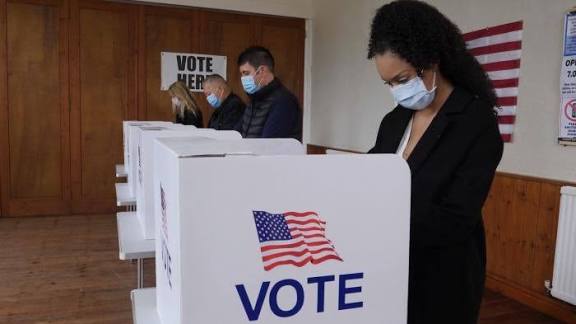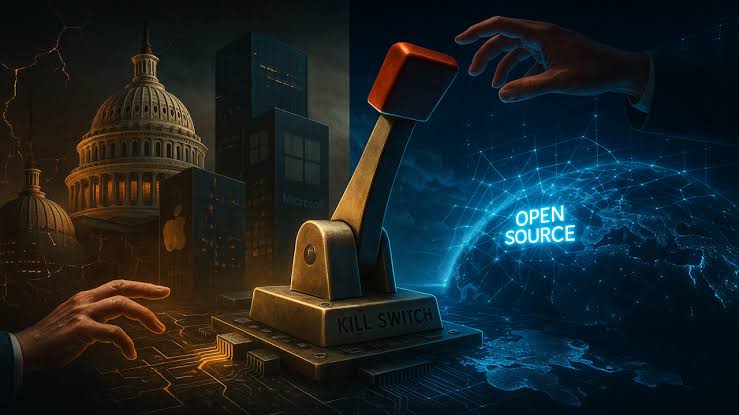Mass Federal Layoffs: Begin Thousands of Government Employees Fired Overnight

Federal workers return to their jobs after the government reopens, and as they catch up on missed tasks, they learn of another shutdown. Today we will discuss about Mass Federal Layoffs: Begin Thousands of Government Employees Fired Overnight
Mass Federal Layoffs: Begin Thousands of Government Employees Fired Overnight
In 2025, the United States federal government has witnessed an unprecedented wave of mass layoffs that has shaken the foundations of its bureaucratic workforce. Thousands of probationary federal employees have been abruptly terminated — some given only minutes to pack their belongings — sparking a fierce political, legal, and social backlash. This massive purge, spearheaded by a controversial initiative known as the “Department of Government Efficiency” (DOGE), raises deep questions about governance, efficiency, and the human cost of institutional downsizing.
The Scale and Speed of the Layoffs

A Rapid Purge
Federal agencies fired tens of thousands of probationary employees in a very short span of time. Some employees were given as little as 30 minutes to vacate their offices after receiving termination notices. Entire offices across agencies like the Department of the Interior saw sudden mass firings overnight.
The scale is staggering: reports suggest that up to 200,000 probationary workers were targeted across various agencies. The purge spans critical departments, including Veterans Affairs, Health and Human Services, Agriculture, Education, Energy, and more.
What’s Driving the Mass Layoffs? The Role of DOGE
The “Department of Government Efficiency”
At the heart of this restructuring is the Department of Government Efficiency (DOGE) — an initiative closely associated with Elon Musk. DOGE’s stated mission is to streamline government operations, reduce waste, and cut costs. Critics argue, however, that the initiative is being used not just to optimize — but to radically shrink the federal workforce, targeting newer (probationary) employees who are more vulnerable to termination.
In February 2025, President Trump issued an executive order titled “Implementing the President’s ‘Department of Government Efficiency’ Workforce Optimization Initiative.” This order officially mandated large-scale reductions across federal agencies, instructing them to cut “inefficiencies” and reduce headcount aggressively.
Probationary Employees as Primary Targets
The layoffs disproportionately affect probationary workers — that is, employees who are still within their initial evaluation period and have fewer legal protections. Because of their status, these workers are more easily dismissed with little notice or appeal. Many of the termination letters cite “performance” as the reason, though union leaders and legal experts dispute the legitimacy of such blanket claims.
Agency-by-Agency Breakdown
While the layoffs are sweeping, several key agencies have been particularly hard hit:
Department of Veterans Affairs (VA): Over 1,000 probationary employees were dismissed, including researchers working on mental health, prosthetics, addiction recovery, and other critical veteran services.
Internal Revenue Service (IRS): Reports indicate that 6,000–7,000 probationary IRS workers were fired. The timing is especially concerning — these cuts come right before the tax-filing season, threatening tax return processing capacity and taxpayer support.
Department of State: Around 1,300+ civil and foreign service employees received termination notices in July 2025.
Department of Health & Human Services (HHS): HHS has proposed cutting 10,000 full-time employees, plus an additional 10,000 through voluntary programs. Meanwhile, more than 5,200 probationary staff have reportedly been targeted for termination.
Department of Agriculture (USDA): Several research divisions saw mass layoff notices.
Department of Energy (DOE): Between 1,200 and 2,000 employees, including those from the National Nuclear Security Administration, were among the dismissed.
Independent Agencies: Agencies such as the Consumer Financial Protection Bureau (CFPB) have also experienced severe cuts, with many fixed-term contract workers and probationaries laid off.
The Human Cost: Stories of Abrupt Departures
The manner of dismissal has drawn widespread condemnation. Some workers report being escorted out of buildings with almost no warning, while others never received formal termination letters — even though their access was shut off. These rapid firings have triggered deep anxiety, particularly among probationary staff who say they were unfairly grouped into mass terminations, regardless of actual job performance.
In one cited case, probationary workers at the Bonneville Power Administration (BPA) — a critical electricity provider in the U.S. Pacific Northwest — were let go. But soon after, some were rehired because their roles were deemed “mission-critical” for maintaining power infrastructure. Meanwhile, at the USDA, staff working on high-priority disease response reportedly had their exit letters rescinded.
Legal Fallout and Political Backlash
Court Challenges
Unsurprisingly, the mass layoff strategy has drawn swift legal resistance. Two federal judges have issued temporary injunctions ordering the Trump administration to reinstate thousands of terminated probationary workers. In one instance, a judge ruled that the administration had not given the required 60-day advance notice for large-scale workforce reductions.
Another judge issued a temporary restraining order halting the layoffs for at least two weeks, arguing that the president may not have the unilateral authority — constitutional or statutory — to reorganize the executive branch so drastically without Congressional approval.
Moreover, the Merit Systems Protection Board (MSPB), an independent federal agency that oversees personnel actions, was thrust into the center of the conflict. The MSPB’s chair ordered the USDA to reinstate roughly 5,600 dismissed workers while investigations continue. Interestingly, the Trump administration had previously removed the MSPB chair from her post, prompting a legal battle over her removal.
Political Opposition
Beyond the courts, lawmakers are vocally opposing the layoffs. Senator Elizabeth Warren and others urged a probe into the impact of the firings on public health and safety. Critics argue that essential services are at risk — especially since many of the terminated employees work on safety, inspection, and emergency response. For instance, the FAA lost around 400 staffers tasked with critical safety roles, including air traffic control inspections and pilot medical clearances.
In Massachusetts, local representatives raised alarms over the firing of hundreds of Education Department workers, warning that services like Head Start, after-school programs, and disability accommodations could be disrupted. Such systemic cuts, opponents argue, could hollow out the government’s ability to deliver on core public missions.
Implications for Governance and Public Services
Undermining Institutional Capacity
These mass layoffs are not just a cost-cutting exercise; they risk eroding the institutional capacity of the federal government. By targeting probationary employees — many of whom are in mission-critical but less politically-protected roles — the administration may be weakening long-term expertise across agencies.
For instance, HHS’s proposed reduction could shrink its workforce from 82,000 to 62,000 full-time employees. Such deep cuts risk undermining public health, regulatory oversight, and scientific research. The firing of CDC officers, disease-detecting epidemiologists, and lab fellows has already raised alarms among public health professionals.
Risk to Public Safety & Reliability
The removal of critical staff at agencies like the FAA, DOE, and HHS raises tangible risks. The rapidity and volume of the cuts can degrade institutional memory, disrupt ongoing projects, and increase the likelihood of oversight failures.
Politically, the strategy of mass firings may also erode public trust in service delivery. As traditional regulatory and safety agencies are hollowed out, citizens may face delays, reduced service quality, and decreased responsiveness, particularly in essential areas like healthcare, disaster response, environmental protection, and veterans’ services.
Morale, Culture, and Recruitment
The layoffs send a chilling signal across the federal workforce. Probationary employees — many early in their careers — may feel particularly insecure. The message is stark: even a modest mistake or a stretched evaluation period could result in sudden termination.
This could deter talent from entering the public sector. If the government is perceived as volatile and unforgiving, the very people who might be drawn to public service could opt for the private sector instead. Over time, this brain drain could further weaken the government’s capacity to attract and retain skilled professionals.
The Bigger Picture: Politics, Efficiency, and Power
An Ideological Purge?
Critics view the mass firings as more than just a cost-savings measure — they see it as an ideological purge. The use of the executive order to bypass traditional civil service protections, paired with DOGE’s central role, suggests a fundamental reimagining of the government. By targeting probationary staff, the administration may be reshaping the federal workforce to align with its political priorities, raising serious questions about merit, neutrality, and the nonpartisan nature of public service.
The Role of Elon Musk
Elon Musk’s involvement via DOGE is controversial. While some praise his vision for efficiency, others argue that his influence undermines democratic accountability. The idea of a billionaire-led “efficiency czar” directing mass firings in government challenges traditional notions of public administration.
Musk’s critics warn that such centralization could lead to managerial elitism, where workforce decisions are made top-down without meaningful input from career civil servants, unions, or Congress.
Constitutional and Institutional Constraints
The legal battles now underway highlight deeper constitutional tensions. Can the president, without explicit legislative backing, dismantle large parts of the bureaucracy? Do agencies need congressional approval for such sweeping reorganization? The courts are being asked to draw the line.
Additionally, the role of the Merit Systems Protection Board, an independent body designed to protect employees from politically motivated firings, is now being tested. How the MSPB navigates this crisis will likely shape the future of federal employment protections.
Possible Outcomes and What Comes Next
Court Verdicts and Reinstatements
The lawsuits challenging the firings may lead to partial or full reinstatements. If the courts rule that the administration lacked authority or violated statutory protections, the mass layoffs could be reversed, at least for a significant portion of affected employees.Agency Restructuring or Rollback
Some agencies may reverse portions of the cuts, especially where the loss of key employees threatens essential functions. Indeed, a few rehiring efforts have already begun in some agencies. Others might pursue a slower, more managed downsizing rather than abrupt termination.Legislative Checks
In response to political and public pressure, Congress may intervene — potentially enacting laws to restrict the use of executive orders for mass firings, or to strengthen probationary worker protections.Long-Term Workforce Transformation
Even if the current wave slows, the precedent set could reshape federal employment. Future administrations might be more willing to use probationary status as a lever for radical restructuring. Alternatively, regulatory reform could rein in such practices.Service Delivery Impacts
The real-world fallout — in public health, national security, regulatory oversight, and veteran care — could become a strong rallying point. If services deteriorate, public outcry could force a reevaluation of the cost-benefit calculus behind these layoffs.
Conclusion
The mass federal layoffs of 2025 represent a dramatic moment in American governance. Under the banner of efficiency, the Trump administration, with backing from Elon Musk’s Department of Government Efficiency, has initiated a sweeping downsizing of the federal workforce — disproportionately targeting probationary employees. The rapidity and scale of the terminations have sparked legal challenges, political uproar, and deep anxiety among public servants.
At its core, this purge is more than a budget-cutting exercise: it’s a transformation of power. By reshaping who works in government, how they are protected, and what roles are deemed essential, the current effort could redefine the very nature of the federal bureaucracy.
As the courts weigh in and agencies scramble to restore capacity, the country faces a critical question: What is the role of government — and who gets to decide who works there? The answers will shape not only the future of the federal workforce but also the balance of power in American democracy.
How useful was this post?
Click on a star to rate it!
Average rating 0 / 5. Vote count: 0
No votes so far! Be the first to rate this post.
About the Author
usa5911.com
Administrator
Hi, I’m Gurdeep Singh, a professional content writer from India with over 3 years of experience in the field. I specialize in covering U.S. politics, delivering timely and engaging content tailored specifically for an American audience. Along with my dedicated team, we track and report on all the latest political trends, news, and in-depth analysis shaping the United States today. Our goal is to provide clear, factual, and compelling content that keeps readers informed and engaged with the ever-changing political landscape.




